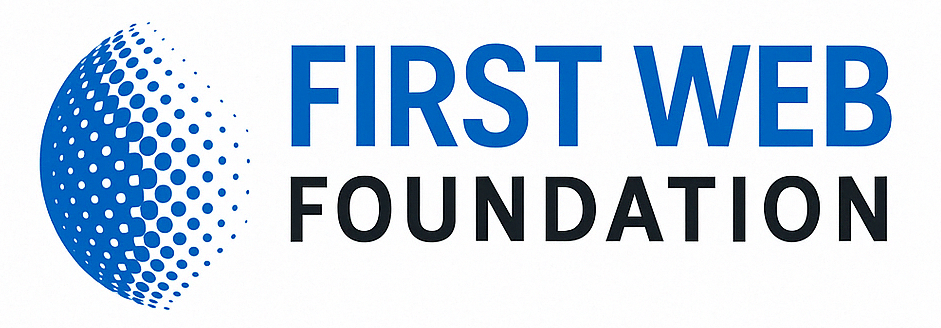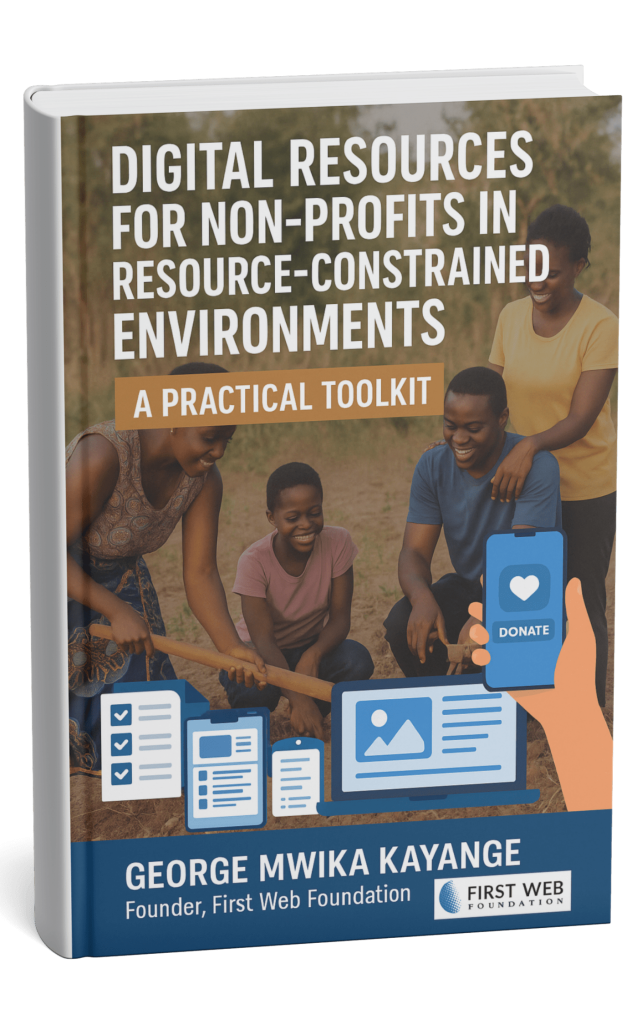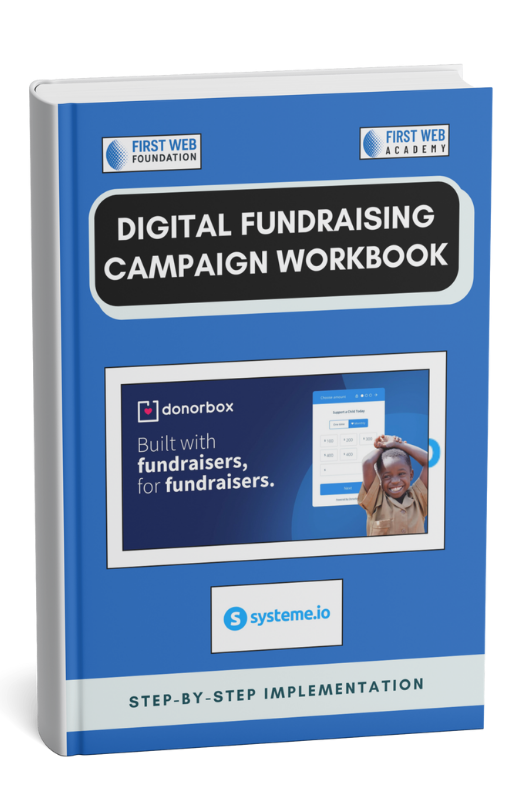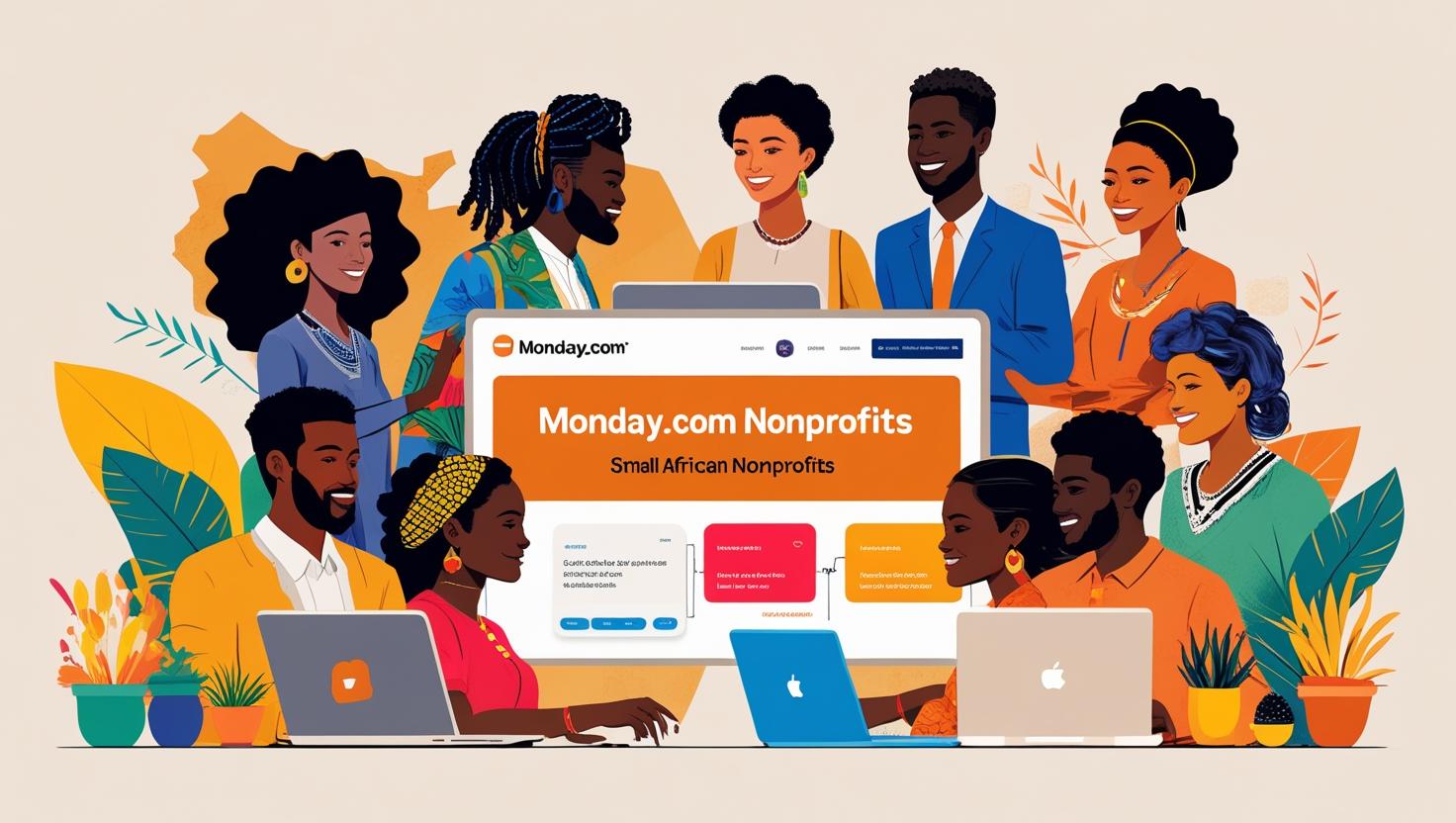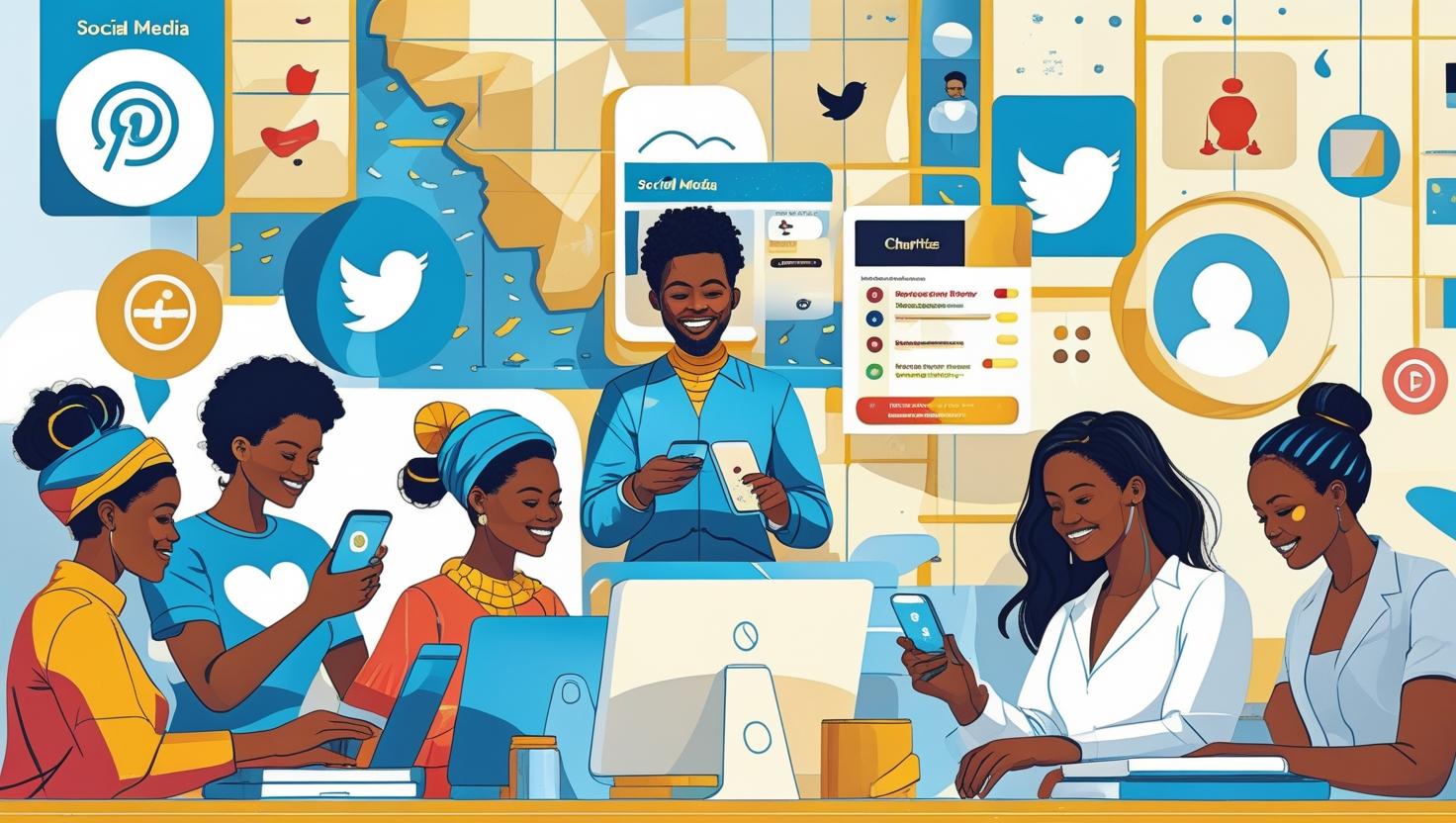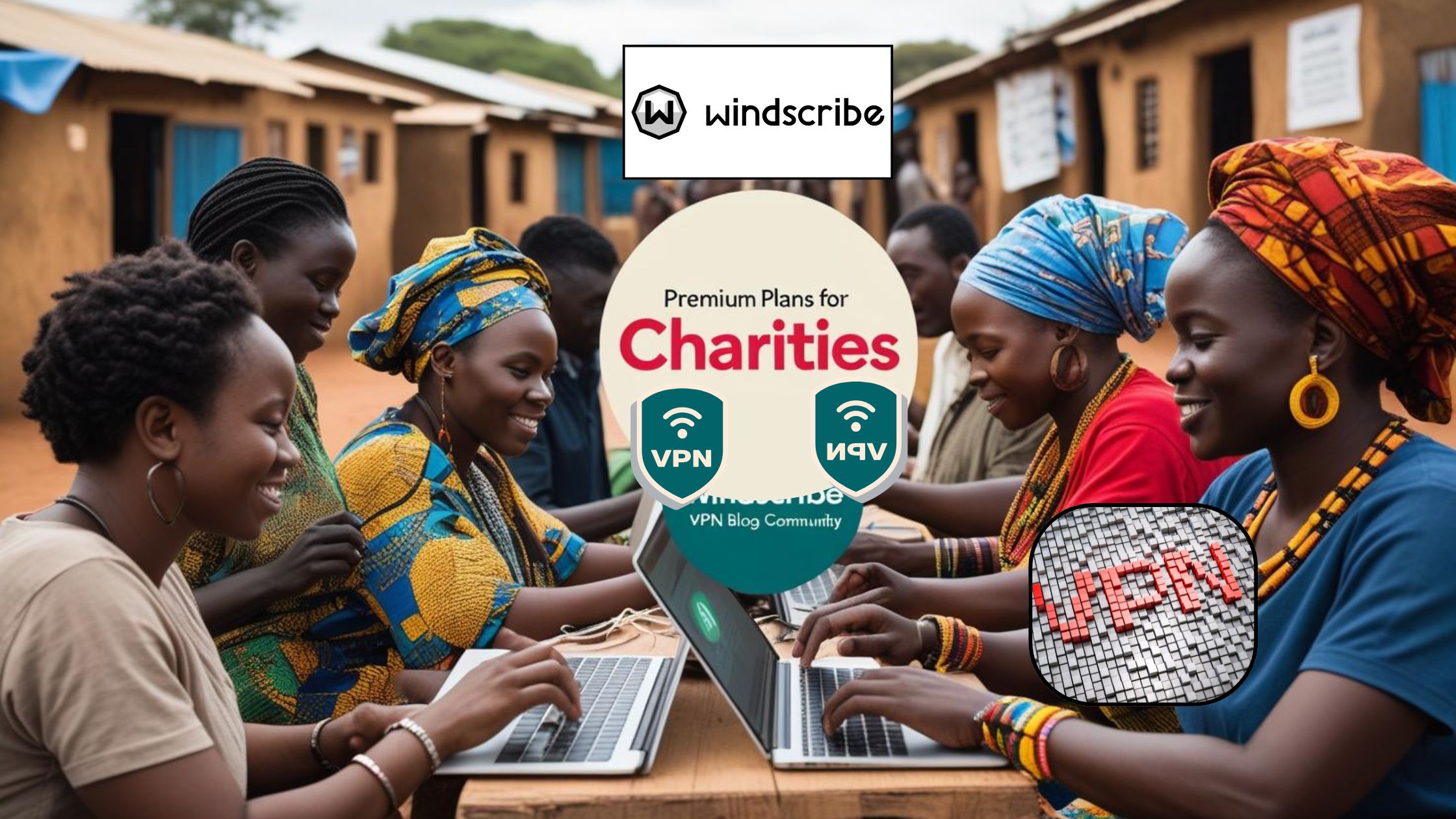A Case for Investing in Digital Tools for Nonprofits in Africa
The nonprofit sector in Africa is characterised by a compelling paradox of digital tools for nonprofits. On one hand, large non-governmental organisations (NGOs) often attract significant attention and substantial financial backing from international donors, thereby dominating public discussions and media coverage.
However, the true essence of developmental work frequently occurs at the grassroots level, where small community-based organisations (CBOs) operate with minimal resources and limited visibility. These smaller entities play a crucial role in addressing local needs and fostering change, yet they face ongoing challenges, including underfunding and a lack of access to digital tools that could enhance their reach and effectiveness.
This longstanding imbalance has persisted for decades, highlighting a disconnect between the larger organisations and the community initiatives that are often more in tune with the realities on the ground. Nevertheless, a transformative shift is underway as advancements in digital technology empower these smaller nonprofits in unexpected ways.
The proliferation of mobile connectivity, social media platforms, and low-cost digital tools is enabling grassroots organisations to amplify their voices, expand their outreach, and connect with wider networks of support.
This shift in power dynamics has the potential to redefine the landscape of nonprofit work across the continent, enabling a more equitable distribution of resources and recognition for local efforts that genuinely drive sustainable development.
The Traditional Nonprofit Hierarchy

African nonprofits operate across a complex spectrum. At one end sit the internationally recognised NGOs with multi-million-pound budgets and operations spanning multiple countries. These organisations possess the infrastructure to influence national policies, attract major foundation funding, and maintain sophisticated communications strategies. They appear regularly in mainstream media and command attention from policymakers.
At the other end are thousands of community-based organisations, faith-based groups, and local initiatives that work directly with communities but remain largely invisible to the outside world. These smaller organisations often lack legal registration, operate on shoestring budgets, and rely heavily on volunteer labour.
The assumption has always been that bigger equals better when it comes to impact. Large nonprofits can point to policy changes, substantial budgets, and wide geographical reach as evidence of their effectiveness. Their access to resources allows them to invest in professional communications, skilled staff, and modern technology.
However, research suggests this hierarchy isn’t as stable as it appears. Studies of South African nonprofits reveal that even large organisations face serious sustainability challenges. They struggle with excessive dependence on donor funding, fierce competition for grants, and donors’ reluctance to fund core operational costs. The advantages of scale come with their own set of problems.
The Digital Disruption
The emergence of accessible digital tools for nonprofits is fundamentally altering this landscape. Technology that once required substantial investment and technical expertise is now available to anyone with basic internet access. This democratisation of digital capabilities is particularly significant for African nonprofits, where resource constraints have historically limited technological adoption.
Website creation exemplifies this transformation that digital tools for nonprofits bring to teh social sector. Until recently, nonprofits needed to hire web developers and pay significant hosting fees to establish an online presence. Today, platforms like WordPress offer intuitive interfaces that enable users to create professional websites without prior coding knowledge. Free plugins and themes deliver functionality that would have cost thousands to develop custom.
Similarly, graphic design has been revolutionised by platforms like Canva. Creating professional marketing materials no longer requires expensive software or design skills. Templates and drag-and-drop interfaces enable anyone to produce high-quality visuals for social media, print materials, and presentations.
The introduction of artificial intelligence tools in 2022 and 2023 has accelerated this trend. AI-powered platforms can generate content, create images, and automate routine tasks at a fraction of traditional costs. For resource-constrained organisations, these capabilities represent a significant competitive advantage.
The Real Game Changer: Cost Reduction
The most significant impact of digital tools for nonprofits isn’t just convenience – it’s the dramatic reduction in operational costs. Small organisations that previously couldn’t afford professional communications now have access to the same tools used by large NGOs. This cost reduction extends beyond individual tools to entire operational models.
Social media platforms have eliminated many traditional barriers to public engagement. A community organisation in rural Kenya can now communicate directly with government officials, international donors, and global audiences through Facebook, Twitter, and Instagram. The cost of reaching stakeholders has dropped from hundreds of pounds for traditional media campaigns to essentially nothing for social media outreach.
Cloud-based collaboration tools from Google and Microsoft enable remote teamwork without expensive IT infrastructure. Teams can share documents, manage projects, and coordinate activities using free platforms that work on basic smartphones. This capability is particularly valuable for organisations operating across multiple locations or working with volunteer networks.
The Skills Gap: The New Digital Divide
While technology costs have plummeted, a new challenge has emerged that is hindering the use of digital tools for nonprofits: the digital skills gap. Many community leaders and nonprofit professionals lack the knowledge to use these tools effectively. This skills deficit has become the primary barrier preventing smaller organisations from capitalising on digital opportunities.
The irony is striking. The same digital tools for nonprofits that promise to level the playing field also create new forms of inequality. Organisations with digitally literate staff can leverage these tools to outperform their peers, while those without such skills fall further behind.
This challenge is particularly acute in Africa, where internet penetration varies significantly between urban and rural areas. However, mobile technology adoption is growing rapidly. Countries like South Sudan and Somalia, despite facing severe economic challenges, now have 10% of their populations online. This trend suggests that digital access is expanding faster than many development professionals anticipated.
Implications for Development Practice
The democratisation of digital tools for nonprofits has profound implications for how development work is funded, implemented, and evaluated. Traditional metrics based on organisational size and budget may no longer accurately reflect impact potential. A small community group with strong digital capabilities might achieve greater reach and influence than a large organisation using outdated methods.
This shift also challenges conventional thinking about capacity building. Rather than focusing solely on traditional management training, donors and support organisations need to prioritise digital literacy. Based on these experiences, First Web Foundation‘s resource and training platform, the First Web Academy, now includes the most effective capacity-building programs, including training on website development, social media management, and digital marketing, alongside traditional nonprofit skills.
The changing landscape also affects how donors assess potential partners. Geographic proximity to beneficiaries and deep community knowledge may become more valuable than institutional infrastructure. Digital tools enable small organisations to demonstrate professionalism and impact in ways that were previously impossible.
Looking Forward: The Acceleration Continues
The pace of digital innovation shows no signs of slowing. New platforms emerge regularly, AI capabilities expand continuously, and mobile internet access continues growing across Africa, enhancing the impact of digital tools for nonprofits. Organisations that embrace these changes will likely gain significant advantages over those that resist.
The COVID-19 pandemic accelerated digital adoption across all sectors, including nonprofits. Remote work became standard practice, virtual events replaced in-person gatherings, and digital communications became essential for maintaining donor relationships. These changes have normalised digital tools in ways that would have taken years to achieve otherwise.
The question now isn’t whether African nonprofits will adopt digital tools – it’s how quickly they’ll adapt and how effectively they’ll use these capabilities to serve their communities. The organisations that master digital tools for nonprofits will be better positioned to attract funding, engage stakeholders, and demonstrate impact.
The Levelling Effect

Perhaps the most significant outcome of this digital transformation is the levelling effect it creates. Small community-based organisations no longer need large budgets to appear professional, communicate effectively, or reach broad audiences. They can compete on equal terms with larger organisations in many areas, thanks to the proliferation of digital tools for nonprofits.
This doesn’t mean that size and resources are irrelevant. Large organisations still have advantages in terms of funding capacity, staff expertise, and institutional relationships. However, the gap between large and small organisations has narrowed considerably in areas like communications, project management, and stakeholder engagement.
The implications of digital tools for nonprofits extend beyond individual organisations to the broader development ecosystem. Donors have more options for implementation partners. Communities have more ways to advocate for their needs. Activists have more tools for organising and mobilising support. The overall effect is a more diverse, dynamic, and responsive nonprofit sector.
A New Era for African Nonprofits
The digital revolution in African nonprofits represents more than technological change – it’s a fundamental shift in how development work can be organised and implemented. The traditional advantages of size, formal structures, and financial resources remain important, but they’re no longer decisive factors in determining organisational effectiveness.
Digital tools for nonprofits have created new possibilities for community-based organisations to increase their impact without proportional increases in resources. The challenge now is ensuring that these tools are accessible to organisations that need them most and that the skills required to use them effectively are widely available.
The future of African nonprofit work will likely be characterised by greater diversity, more distributed leadership, and increased community control over development processes. Digital technology isn’t just changing how nonprofits operate – it’s changing who can operate effectively in the development space.
For established organisations, this transformation presents both opportunities and challenges. They must adapt to a more competitive environment while leveraging their existing advantages. For emerging organisations, the digital revolution offers unprecedented opportunities to make an impact from day one.
The playing field for digital tools for nonprofits in Africa isn’t completely level yet, but it’s more level than it’s ever been. The organisations that recognise this shift and adapt accordingly will be the ones that thrive in the digital age of African development.
Frequently Asked Questions
Are large nonprofits becoming irrelevant due to digital tools?
Not at all. Large organisations still have significant advantages in funding capacity, staff expertise, and institutional relationships. However, their competitive advantage has narrowed considerably in areas like communications and stakeholder engagement. The most successful large nonprofits are those adapting to this new reality.
How significant is the digital skills gap in African nonprofits?
The skills gap has become the primary barrier preventing smaller organisations from capitalising on digital opportunities. While technology costs have plummeted, many community leaders lack the knowledge to effectively use these tools. This has created a new form of digital inequality within the nonprofit sector.
What impact did COVID-19 have on digital adoption in African nonprofits?
The pandemic significantly accelerated digital adoption across all sectors, including nonprofits. Remote work became standard practice, virtual events replaced in-person gatherings, and digital communications became essential for maintaining donor relationships. These changes normalised digital tools in ways that would have taken years to achieve otherwise.
Which digital tools for nonprofits are having the biggest impact on smaller ones?
Website building platforms like WordPress, design tools like Canva, and social media platforms are having the most immediate impact. These tools address the most pressing needs for professional presentation and stakeholder communication. AI-powered content creation tools are emerging as the next major game-changer.
Is this digital transformation happening equally across all African countries?
No, the pace varies significantly based on internet infrastructure and mobile phone penetration. Urban areas generally see faster adoption than rural areas. However, mobile technology adoption is growing rapidly even in challenging environments, suggesting that digital access is expanding faster than many anticipated.
How are donors responding to this shift in the nonprofit landscape?
Donor responses are mixed. Some are updating their assessment criteria to include digital capabilities and community proximity alongside traditional metrics. Others continue to rely on established partnerships with large organisations. The most progressive donors are investing in digital literacy training as part of their capacity building programmes.
What does this mean for accountability and transparency in the nonprofit sector?
Digital tools for nonprofits are actually enhancing accountability by making it easier for organisations to document and share their impact. Social media platforms enable real-time reporting, while cloud-based tools facilitate better financial tracking. However, this also raises questions about digital literacy among oversight bodies and the need for updated accountability frameworks.
Are there any risks associated with this digital transformation?
Yes, several risks exist. Organisations may become overly dependent on free platforms that could change their terms or pricing. Digital security concerns are growing as more operations move online. There’s also the risk of digital divides creating new forms of inequality within the nonprofit sector.
Key Takeaways
The Digital Revolution is Democratising Nonprofit Work: Technology has dramatically reduced the cost barriers that once separated large NGOs from small community-based organisations. Professional websites, marketing materials, and communication tools are now accessible to any organisation with basic internet access.
Skills Matter More Than Budget: The primary barrier for smaller nonprofits has shifted from lack of funding to lack of digital skills. Organisations with digitally literate staff can now compete effectively with much larger, better-funded counterparts.
Traditional Metrics May Be Outdated: Organisational size, budget, and formal structure are becoming less reliable indicators of impact potential. Small organisations with strong digital capabilities for exploiting digital tools for nonprofits can achieve greater reach and influence than large organisations using outdated methods.
Mobile Technology is Expanding Access: Even in challenging environments like South Sudan and Somalia, internet penetration is growing rapidly. Mobile phones are becoming the primary gateway to digital tools for nonprofits across Africa.
The Competitive Landscape Has Changed: Large nonprofits can no longer rely solely on their size and resources for competitive advantage. They must adapt to a more competitive environment where smaller organisations can match their professional presentation and stakeholder engagement capabilities with digital tools for nonprofits.
Donor Strategies Need Updating: Traditional capacity building approaches focused on management training may be less effective than programmes that prioritise digital literacy. Donors should consider proximity to beneficiaries and digital capabilities alongside institutional infrastructure when selecting partners.
Support the First Web Foundation
The First Web Foundation is committed to helping small nonprofits and social enterprises harness the power of digital technology. Our mission is to bridge the digital divide and provide practical resources that make a real difference in your community work.
How You Can Help:
Your support enables us to create more resources like this analysis and reach more organisations across Africa. Every contribution, no matter how small, helps us continue this vital work.
Make a Donation: Visit firstwebfoundation.org/donate to make a secure online donation. Your contribution directly supports the development of free educational resources for nonprofits.
Follow Our Work: Stay updated with our latest resources and insights by following us on social media:
- Subscribe to our YouTube channel: youtube.com/@FirstWebFoundation
- Like our Facebook page: facebook.com/firstwebfoundation
- Connect with us on LinkedIn: linkedin.com/company/first-web-foundation
Share This Analysis: Help us reach more organisations by sharing this article with your network. Forward it to other nonprofit leaders, post about it on social media, or include it in your newsletters.
Together, we can ensure that every nonprofit in Africa has access to the digital tools they need to create meaningful change in their communities.
